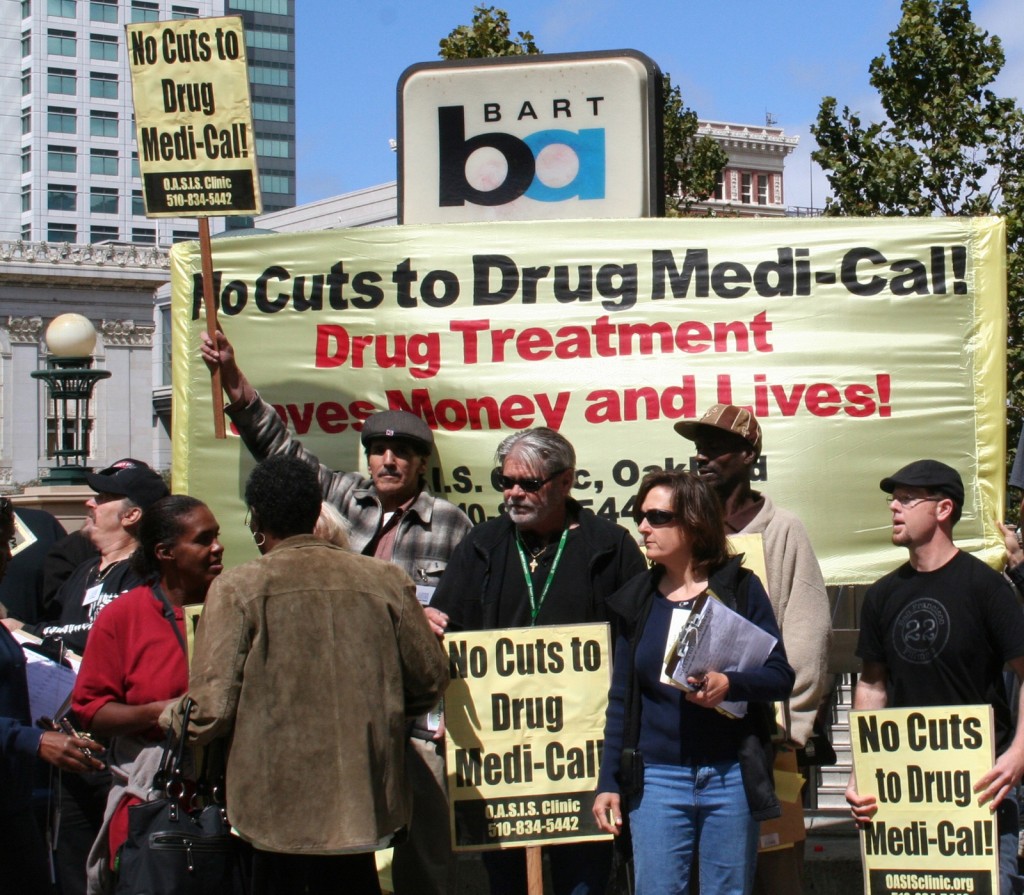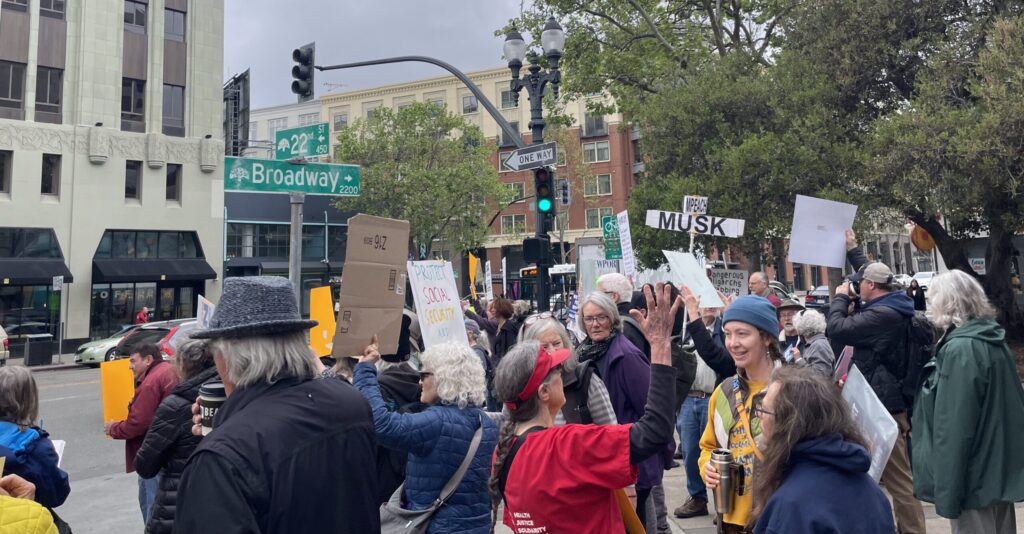
Addict treatment centers call proposed funding cuts dangerous
on September 22, 2010
Local drug abuse treatment patients and providers are pushing the legislature to keep Governor Arnold Schwarzenegger from cutting Medi-Cal funding for state-supported addiction services.
The target of their concern is provider reimbursement funding for Medi-Cal Outpatient Drug-Free Counseling (ODF) and Medication-Assisted Treatment (MAT), which the governor has proposed eliminating as a cost-cutting measure. The cuts are estimated to save the state $53 million.
Medi-Cal now reimburses treatment providers who offer counseling and methadone maintenance therapy for drug abuse patients. If this funding were lost, patients now receiving these services would have to be insured, or pay out-of-pocket.
The cut proposal was first made public in May, during one of Schwarzenegger’s weekly video addresses to the state. Although the Governor’s budget proposal has not been approved, the state legislature is still negotiating a budget, and a new plan could eliminate Medi-Cal reimbursement for these programs.
Without the Medi-cal funding, leaders of some local medical groups that work with addicts, including Bay Area Addiction Research and Treatment Services (BAART), say their facilities would have to shut down. The BAART organization operates methadone clinics across the state, including one in East Oakland.
“On a statewide level, drug Medi-Cal pays for 55 percent of methadone patients,” said BAART chief administrative officer Jason Kletter, who is also the president of the California Opioid Maintenance Providers. “I don’t think any business can stay alive losing more than half of their customers.”
Tonie, a 58-year-old heroin addict from East Oakland, goes to the Casa Segura needle exchange at 98th Avenue and Pearmain Street on Thursday evenings. She said she gets her methadone at Lifeline Clinic, 9442 International Blvd., everyday. The clinic also receives Medi-Cal reimbursement funding from Medi-Cal, which would be lost if the cuts are made. “It (methadone) stabilizes me,” Tonie said, “so I can still do the things I need to.”
Orlando Chavez, a board member at the Berkeley Free Clinic, said methadone has also helped to calm him. Chavez said he has been taking methadone steadily since 2001. Today he takes methadone for maintenance therapy every two weeks, he said, so he is still concerned about possible cuts. Chavez said he obtains his methadone at the BAART clinic on 1124 International Blvd. Officials at Berkeley’s Bay Area Addiction Treatment Services, a clinic which is also used by many Oakland addicts but is not a part of Kletter’s group, declined to comment on the proposed Medical cut and its potential effects.
“Most people on methadone already have other complicated health conditions,” said Chavez, who said he was treated for hepatitis C six years ago. “I wouldn’t have been able to do the treatment without the methadone to stabilize me.”
On Sept. 8, Chavez was one of more than a dozen people to protest in downtown Oakland against the governor’s proposed cuts. Dr. Diana Sylvestre, executive director of the Organization to Achieve Solutions in Substance Abuse (OASIS) clinic in Oakland, was also there. The OASIS clinic does not receive the jeapordized Medi-Cal subsidies for drug addiction treatment, but the clinic specializes in treating patients who have contracted hepatitis C, a blood borne disease, through intravenous drug use.
“As a doctor, my concern is that there are tens of thousands of patients that are going to be destabilized and harmed,” Sylvestre said. “As an angry taxpayer, I resent cuts that are going to cost more money.”
On Wednesday, Sept. 15, a group of OASIS patients and staff hand-delivered boxes that held 4,000 petitions, all protesting the Medi-Cal substance abuse treatment cuts, to the governor’s office in Sacramento.
Kletter predicted that the Medi-Cal drug addiction treatment cuts would eventually lead to hundreds of millions of dollars in higher costs for new law enforcement and health care. Across the state, 40,000 people receive methadone treatment; about 35,000 of those people will lose access to treatment if the cuts take place, he said. “If the clinics close, the people who can afford to pay will be affected too,” he said. People who are addicted will “pretty quickly turn to crime to fund their drugs,” he said.
Tonie said she also anticipates that there will be a rise in crime if cuts to Medi-Cal substance abuse treatment are made. “When you’re on heroin, you have to do what you have to do to get it,” she said.
Not all methadone patients would be left without treatment. Even with the proposed cuts, children under 18 and pregnant women would still be eligible for methadone treatment under Medi-Cal reimbursement. But Kletter said the plan is insufficient for some of these patients. A pregnant woman, for example, would only be covered for up to 60 days post-partum, he said. “Then she will be thrown off treatment. She will have to prostitute herself to get drugs and commit other crimes. And what kind of mother will she be?”
Suzi Rupp, public information officer for the California Department of Alcohol and Drug Programs (ADP), wrote in an email that state officials do understand the harsh impact these cuts would have. “The cuts will devastate treatment services, just as the current fiscal environment is affecting the services we at ADP are able to deliver to our stakeholders across the state,” she wrote. “We understand the effect that cuts will have on the clients who need treatment services and on those who provide the services.”
But Schwarzenegger has insisted many times that the state budget can only be balanced with deep cuts to public programs “We have no choice,” he said in one of his weekly addresses last July. “Solving our $20 billion deficit and putting our finances back on solid ground is going to require many painful decisions. It will mean cuts to programs that I support, that the legislators support, or that you support too.”
Connect with Oakland North on Facebook, or follow us on Twitter.
6 Comments
Oakland North welcomes comments from our readers, but we ask users to keep all discussion civil and on-topic. Comments post automatically without review from our staff, but we reserve the right to delete material that is libelous, a personal attack, or spam. We request that commenters consistently use the same login name. Comments from the same user posted under multiple aliases may be deleted. Oakland North assumes no liability for comments posted to the site and no endorsement is implied; commenters are solely responsible for their own content.

Oakland North
Oakland North is an online news service produced by students at the UC Berkeley Graduate School of Journalism and covering Oakland, California. Our goals are to improve local coverage, innovate with digital media, and listen to you–about the issues that concern you and the reporting you’d like to see in your community. Please send news tips to: oaklandnorthstaff@gmail.com.






There is a choice and Arnold has already made it. The question is whether the rest of us accept that choice and what we can do about it.
Everyone is against these cuts, the police, correction officials, parole officers,narcs, doctors, families, community safety advocates. When are we going to end this annual budget lunacy and pass a responsible budget that does not leave people devastated?
Great article Terria! Thanks for coming out and covering this story.
[…] Visit link: Addict treatment centers call proposed funding cuts dangerous … […]
We all know that drug treatment saves lives and money. We know that drug treatment reduces the spread of HIV, hepatitis C, reduces drug over dose, criminal activity and incarceration. Now we are going to show our legislators and governor what these cuts to Drug Medi-Cal are going to look like. Join O.A.S.I.S. Clinic for a “die in” on the south steps of the capitol, Thursday, Oct 7th. Meet at noon, action begins at 12:30. Carpools are being organized from the Bay Area. Call Lisa Roellig at 415-238-1801 or email oasisclinic@mail.com for more information.
Thanks again Terria for getting this important story out there.
I have a great idea. Instead of making cuts that will end up costing us far more than it will save, lets end this BS “war on drugs” and also stop the barbaric “death penalty”. One death penalty case costs 1.3 Million dollars MORE than a “life without possible parole” case, and it also costs way more to house death row prisoners. So far there has been 135 death row prisoners that have been proven by DNA to be innocent! That’s 135 innocent people that would have been murdered! We could also probably close down 2/3 of California prisons is we stop this insane “war on drugs”. With them would go 2/3 of the prison guards along with their outrageous wages & pensions. It has been proven that sending drug addicts to prison is NOT a deterrent or a solution! We need to start using our heads if we ever want to straighten out this state.
“Die In” on the Capitol will be Wednesday, Oct 13th. Email oasisclinic@mail.com for the flyer!